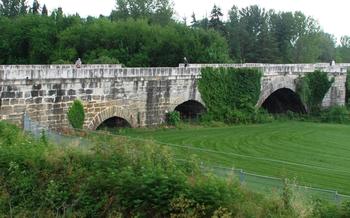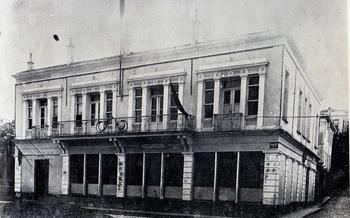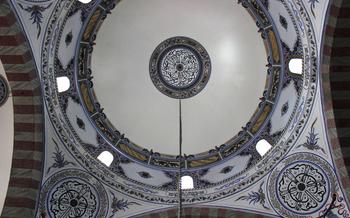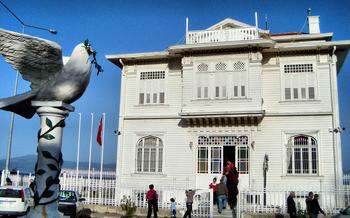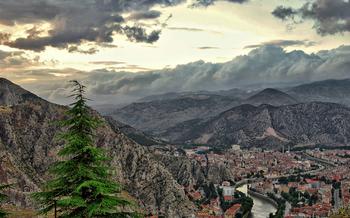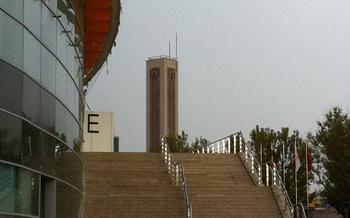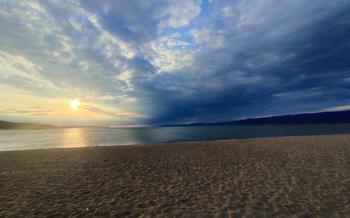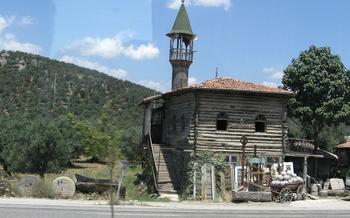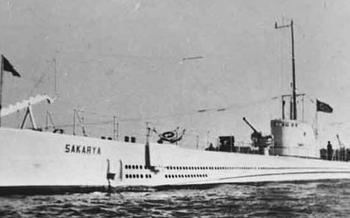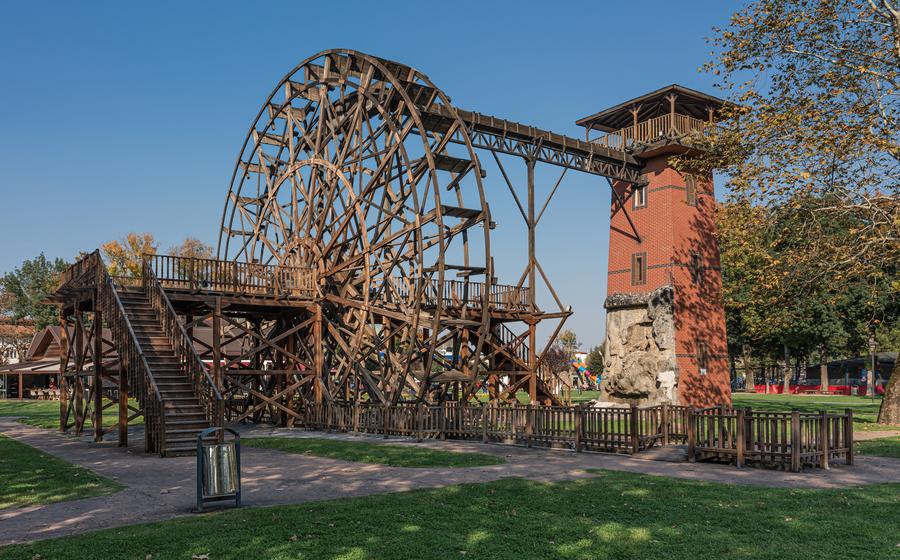
Sakarya Sehitlik (Martyrdom)
- Sakarya Sehitlik (Martyrdom)
- The Battle of Sakarya
- Honoring the Fallen
- Exploring the Sakarya Sehitlik
- Graves of Turkish Soldiers
- Graves of Allied Soldiers
- Museum of the Sakarya Sehitlik
- Tomb of the Unknown Soldier
- Eternal Flame Monument
- War Memorials and Sculptures
- Historical Sites and Landmarks
- Visiting Hours and Admission
- Dress Code and Etiquette
- Getting There
- Insider Tip
Sakarya Sehitlik (Martyrdom)
Historical Background The Sakarya Sehitlik holds immense historical significance as the final resting place of Turkish soldiers who valiantly defended their homeland during the decisive Battle of Sakarya in 192This fierce conflict, considered a turning point in the Turkish War of Independence, bears witness to the unwavering resilience and sacrifices made by the Turkish people in their quest for freedom and sovereignty.
Significance The Sakarya Sehitlik serves as a poignant reminder of the immense sacrifices made by Turkish soldiers during the Battle of Sakarya, a pivotal moment that shaped the course of Turkey's history. It stands as a testament to the indomitable spirit and unwavering commitment of those who fought to safeguard their nation's independence.
Location Nestled amidst the serene landscapes of Sakarya, Turkey, the Sakarya Sehitlik is situated in the heart of the city, a poignant symbol of remembrance and honor. Its strategic location underscores its importance as a sacred site paying homage to the fallen heroes who played a crucial role in shaping Turkey's destiny.
Key Features The Sakarya Sehitlik encompasses an array of key features that collectively contribute to its profound significance. Within its sacred grounds lie the graves of Turkish soldiers who laid down their lives for their homeland, adorned with inscriptions that recount their heroic deeds. Towering memorials, sculptures, and an eternal flame stand as solemn reminders of their unwavering sacrifice, perpetuating their legacy for generations to come.
The Battle of Sakarya
Prelude to the Battle
The Battle of Sakarya, also known as the Sakarya Meydan Muharebesi, was a pivotal clash between the Turkish Army and the Greek forces during the Greco-Turkish War of 1919-192The battle took place from August 23 to September 13, 1921, in the Sakarya River region of western Anatolia.
The Greek army, under the command of General Anastasios Papoulas, had launched an offensive in July 1921, aiming to capture Ankara, the Turkish capital. The Turkish army, led by Mustafa Kemal Atatürk, established defensive positions along the Sakarya River to halt the Greek advance.
Course of the Battle
The battle began with a series of Greek attacks on the Turkish lines. The Greeks initially made some progress, but the Turkish forces held their ground. Over the next few weeks, the fighting intensified, with both sides suffering heavy casualties.
The turning point of the battle came on September 13, when the Turkish forces launched a counteroffensive. The Greeks were caught off guard and forced to retreat. The Turkish army pursued the retreating Greeks, inflicting further losses.
Aftermath and Impact
The Battle of Sakarya was a decisive victory for the Turkish forces. The Greek army was routed, and its hopes of capturing Ankara were dashed. The battle marked a turning point in the war, as it shifted the balance of power in favor of the Turks.
The victory at Sakarya boosted the morale of the Turkish people and strengthened their determination to resist the Greek invasion. It also led to increased international recognition of the Turkish national movement.
Commemoration
The Battle of Sakarya is commemorated as a major victory in Turkish history. Every year, on September 13, Turkey celebrates Zafer Bayramı (Victory Day) to mark the anniversary of the battle.
Honoring the Fallen
The Sakarya Sehitlik is not merely a resting place for the departed; it is a site of solemn remembrance and profound honor. The Turkish people hold their fallen soldiers in the highest esteem, considering them martyrs who sacrificed their lives for the nation's freedom and independence. Their memory is deeply embedded in the collective consciousness, and their heroism is a source of national pride.
Memorials and Monuments
Throughout the Sakarya Sehitlik, memorials and monuments stand as testaments to the courage and sacrifice of the fallen soldiers. These structures vary in form and design, from towering obelisks to intricate sculptures, each conveying a unique message of remembrance. Some monuments depict soldiers in battle, capturing the intensity and determination of their struggle. Others feature poignant scenes of grieving families, symbolizing the immense loss and sorrow caused by war.
Commemorative Ceremonies
Every year, on the anniversary of the Battle of Sakarya, the Sakarya Sehitlik hosts solemn commemorative ceremonies to honor the fallen soldiers. These events are attended by government officials, military personnel, and the general public, who gather to pay their respects and remember the sacrifices made by their countrymen. The ceremonies often include speeches, prayers, and the laying of wreaths at the graves of the martyrs.
Remembrance Rituals
Beyond official ceremonies, the Turkish people engage in various remembrance rituals to honor their fallen soldiers. One common practice is the recitation of prayers and the offering of flowers at the graves of the martyrs. Families often visit the Sakarya Sehitlik on special occasions, such as anniversaries or religious holidays, to pay their respects to their loved ones who made the ultimate sacrifice.
Exploring the Sakarya Sehitlik
The Sakarya Sehitlik is a sprawling complex, meticulously designed to honor the fallen soldiers of the Turkish War of Independence. The layout is both functional and symbolic, with well-defined sections for Turkish and Allied graves, as well as commemorative monuments and memorials.
As you enter the Sehitlik, you will be greeted by a serene and somber atmosphere. The grounds are beautifully landscaped, with lush greenery, colorful flowers, and towering cypress trees. Walking trails and paths meander through the complex, inviting visitors to explore and pay their respects.
Notable landmarks within the Sehitlik include the Tomb of the Unknown Soldier, the Eternal Flame Monument, and various war memorials and sculptures. Each of these monuments holds a unique significance and serves as a poignant reminder of the sacrifices made by the soldiers.
Audio-visual exhibits are strategically placed throughout the Sehitlik, providing visitors with an immersive and educational experience. These exhibits showcase historical footage, photographs, and personal accounts from the war, helping to bring the events of the Battle of Sakarya to life.
Graves of Turkish Soldiers
The Sakarya Sehitlik is the final resting place for a vast number of Turkish soldiers who valiantly fought and sacrificed their lives during the Battle of Sakarya. The meticulously maintained graves, each adorned with a headstone, stand as a solemn testament to their unwavering patriotism and devotion to their homeland. Inscribed on these headstones are the names, ranks, and sometimes poignant messages honoring the fallen heroes.
The sheer number of graves serves as a poignant reminder of the immense sacrifices made by the Turkish nation during this pivotal battle. It is estimated that over 10,000 Turkish soldiers perished in the conflict, their lives forever etched in the annals of history. The headstones, adorned with the Turkish flag, stand in silent tribute to their unwavering loyalty and the indomitable spirit that characterized their fight for freedom.
The maintenance and preservation of these graves are of paramount importance to the Turkish people. The meticulous care taken to ensure their pristine condition reflects the deep reverence and gratitude held for the fallen soldiers. Regular cleaning, upkeep, and restoration efforts are undertaken to honor their memory and preserve their legacy for generations to come.
The historical significance of these graves extends beyond the mere commemoration of individual lives lost. They collectively represent the indomitable spirit and unwavering determination of the Turkish nation during a pivotal moment in their history. The sacrifices made by these soldiers paved the way for the establishment of a modern and independent Turkish state, forever securing their place in the nation's collective memory.
Graves of Allied Soldiers
The Sakarya Sehitlik is not only the resting place for Turkish soldiers who fought in the Battle of Sakarya, but it also houses the graves of allied soldiers who participated in the conflict. These graves serve as a poignant reminder of the international support that Turkey received during its War of Independence.
Among the allied soldiers buried in the Sakarya Sehitlik are those from countries such as Germany, Austria, Hungary, and Russia. These men fought alongside the Turks against the invading Greek forces, and their sacrifice is a testament to the solidarity that existed among nations during this critical period in Turkish history.
The presence of allied graves in the Sakarya Sehitlik is a symbol of reconciliation and international cooperation. It underscores the fact that the Battle of Sakarya was not just a Turkish struggle but a collective effort to defend the sovereignty and independence of the nation.
Museum of the Sakarya Sehitlik
In addition to the poignant graves and memorials, the Sakarya Sehitlik also houses a museum dedicated to preserving and showcasing the history and significance of the battle. The museum features a range of exhibits and displays that provide visitors with a deeper understanding of the events that unfolded during the War of Independence.
Exhibits include historical artifacts, such as weapons, uniforms, and personal belongings of soldiers from both sides of the conflict. Interactive exhibits allow visitors to engage with the history in a more immersive way, such as through virtual reality experiences or touchscreens that display historical documents and photographs.
The museum also offers educational programs for students and groups, which provide guided tours and workshops that delve into the historical context of the battle, the sacrifices made by the soldiers, and the enduring legacy of the War of Independence. Through these programs, the museum aims to educate future generations about the importance of remembering and honoring those who fought for their country.
Tomb of the Unknown Soldier
Amidst the rows of headstones that mark the resting places of known soldiers, a solitary tomb stands as a poignant tribute to those whose identities were lost to the ravages of war. This is the Tomb of the Unknown Soldier, a symbol of remembrance and honor for the countless Turkish soldiers who made the ultimate sacrifice in defense of their homeland during the Battle of Sakarya.
Designed with somber elegance, the tomb is a simple yet powerful edifice. Its clean lines and understated form evoke a sense of respect and reverence. Atop the tomb, an eternal flame flickers, casting a warm glow that illuminates the surrounding area and symbolizes the undying memory of the fallen.
Each year, on the anniversary of the Battle of Sakarya, a solemn ceremony is held at the Tomb of the Unknown Soldier. Wreaths are laid, prayers are recited, and speeches are given to honor the bravery and sacrifice of the unknown heroes who lie beneath. This ceremony serves as a reminder of the incalculable cost of war and the importance of cherishing peace.
The Tomb of the Unknown Soldier is not just a memorial to the past; it is also a symbol of hope for the future. It stands as a testament to the resilience of the Turkish people and their unwavering commitment to defending their nation. By honoring the unknown soldiers who gave their lives for their country, Turkey reaffirms its dedication to peace, unity, and progress.
Eternal Flame Monument
At the heart of the Sakarya Sehitlik, where the spirits of fallen soldiers forever reside, stands the Eternal Flame Monument - a beacon of remembrance, unity, and eternal devotion. Its design, both simple and profound, features a towering stone pedestal, atop which a bronze flame stands tall, its flickering glow symbolizing the indomitable spirit of those who made the ultimate sacrifice.
The Eternal Flame Monument serves as a poignant reminder of the sacrifices made during the Battle of Sakarya and beyond. It represents the eternal flame of patriotism, courage, and selflessness that burns bright in the hearts of the Turkish people. Each evening, a solemn lighting ceremony takes place, where visitors gather to pay their respects and witness this symbolic act of remembrance.
The monument stands as a symbol of unity and solidarity among the Turkish people, honoring the memory of their fallen heroes and reminding them of the struggles and sacrifices that shaped their nation's history. It is a place of reflection and contemplation, where visitors can connect with the past and pay homage to those who gave their lives for their country.
War Memorials and Sculptures
The Sakarya Sehitlik is adorned with a number of poignant war memorials and sculptures that pay tribute to the fallen soldiers and the significance of the battle. Among the most notable is the "Victory Monument," a towering obelisk that symbolizes the triumph of the Turkish forces. Its intricate carvings depict scenes from the battle, capturing the valor and sacrifice of the soldiers.
Another striking memorial is the "Martyrs' Monument," a bronze sculpture that features a group of soldiers charging into battle, their faces etched with determination and resolve. The monument serves as a powerful reminder of the courage and camaraderie exhibited by the Turkish troops.
Visitors will also find sculptures dedicated to individual soldiers who displayed exceptional bravery during the battle. These sculptures, often accompanied by inscriptions recounting their heroic deeds, offer a glimpse into the personal stories of the men who gave their lives for their country.
The war memorials and sculptures at the Sakarya Sehitlik are not merely works of art; they are tangible expressions of remembrance and gratitude. They invite visitors to reflect on the sacrifices made by the soldiers and to honor their legacy of courage and patriotism.
Historical Sites and Landmarks
In the vicinity of the Sakarya Sehitlik, visitors can explore a rich tapestry of historical sites and landmarks that provide a deeper understanding of the region's past. These sites offer a tangible connection to the events that shaped the Battle of Sakarya and the broader history of Turkey.
One notable site is the Sakarya War Museum, located just a short distance from the Sehitlik. This museum houses a collection of artifacts, documents, and exhibits that provide a comprehensive account of the battle and its significance. Visitors can gain insights into the strategies, tactics, and sacrifices made by both sides during the conflict.
Another must-visit site is the Ataturk Memorial Forest, established in 1925 to honor the memory of Mustafa Kemal Ataturk, the founder of the Turkish Republic. This vast forest, located a short drive from the Sehitlik, features walking trails, picnic areas, and a monument dedicated to Ataturk. Visitors can immerse themselves in the natural beauty of the forest while reflecting on the legacy of this visionary leader.
For those interested in exploring the region's ancient heritage, the Hendek Mound, located about 20 kilometers from the Sehitlik, is a significant archaeological site. This mound, dating back to the Bronze Age, offers a glimpse into the early civilizations that inhabited the Sakarya region. Visitors can marvel at the well-preserved remains of the ancient city, including fortifications, temples, and residential structures.
To delve deeper into the local culture and traditions, visitors can explore the Sakarya Ethnography Museum, which showcases a collection of artifacts, textiles, and handicrafts that provide insights into the daily life and customs of the region's inhabitants. The museum offers a vibrant glimpse into the cultural heritage of Sakarya and its people.
These historical sites and landmarks, when combined with a visit to the Sakarya Sehitlik, create a comprehensive and immersive experience that allows visitors to delve into the region's rich history and cultural heritage.
Visiting Hours and Admission
Visiting Hours: - The Sakarya Sehitlik is open to the public daily from 8:00 AM to 6:00 PM. - Visitors are advised to plan their visit during daylight hours to fully appreciate the site's beauty and significance.
Admission Fees: - Entrance to the Sakarya Sehitlik is free of charge for all visitors, allowing everyone the opportunity to pay their respects to the fallen heroes.
Advance Booking and Reservations: - Advance booking or reservations are not required to visit the Sakarya Sehitlik. Visitors can simply arrive during the designated hours and proceed to explore the site.
Accessibility for Visitors: - The Sakarya Sehitlik is designed to be accessible to visitors of all abilities. - Wheelchair-accessible ramps and pathways are available, ensuring that everyone can navigate the site with ease. - Visitors with special needs are encouraged to contact the site's management for any assistance or inquiries.
Dress Code and Etiquette
Sakarya Sehitlik is a sacred site that demands respectful behavior from visitors. Appropriate attire that covers shoulders and knees is recommended as a sign of respect for the fallen soldiers and their families. Avoid wearing shorts, tank tops, or revealing clothing.
When visiting the martyrs' cemetery, maintain a respectful silence and refrain from loud conversations or disruptive behavior. This allows for a somber and reflective atmosphere where visitors can pay their respects and remember the sacrifices made by the soldiers.
Photography is permitted within the cemetery, but it is essential to be mindful of your surroundings and avoid taking pictures that may disturb or disrespect other visitors. Refrain from using flash photography near the graves or memorials, as it might be intrusive.
By adhering to these guidelines, visitors can show their respect for the fallen soldiers and contribute to preserving the sanctity of this memorial site.
Getting There
Transportation Options
Reaching the Sakarya Sehitlik is a straightforward journey. Whether you prefer public transportation or the convenience of a private vehicle, multiple options are available to suit your needs.
For those utilizing public transport, the Sakarya Sehitlik is conveniently located within walking distance of several bus stops. Regular bus services connect the site to various parts of the city, ensuring easy access for visitors.
If you opt for the flexibility of a private vehicle, the Sakarya Sehitlik is easily accessible via well-maintained roads. Ample parking space is available on-site, providing a hassle-free experience for drivers.
Directions and Routes
To reach the Sakarya Sehitlik by car, follow these simple directions:
From the city center, take the main road leading out of the city in the direction of the Sakarya River. Continue along this road for approximately 10 kilometers until you reach the town of Sakarya. Once in Sakarya, follow the signs for the Sakarya Sehitlik, which will lead you to the site's entrance.
Parking Facilities
The Sakarya Sehitlik provides ample parking space for visitors arriving by private vehicles. The parking area is well-organized and conveniently located near the site's entrance, ensuring a seamless transition from car to commemoration.
Accessibility for Persons with Disabilities
The Sakarya Sehitlik is committed to ensuring accessibility for all visitors, including those with disabilities. Designated parking spaces are available close to the site's entrance, and wheelchair-accessible pathways lead visitors throughout the grounds. Accessible restrooms are also available on-site for added convenience.
Insider Tip
-
Best time to visit for a serene experience: Avoid crowds and seek tranquility by planning your visit during the weekdays or early morning hours. The serene atmosphere allows for a more contemplative and personal experience, enabling you to fully immerse yourself in the site's significance.
-
Guided tours for in-depth insights: Enhance your visit by joining a guided tour led by knowledgeable historians or local experts. These tours offer insightful narratives about the history of the Sakarya Sehitlik, shedding light on the events that transpired and the significance of the site.
-
Combining with other nearby attractions: Maximize your time in Sakarya by exploring other notable attractions in the vicinity. Visit the Sakarya Museum, immerse yourself in the bustling local markets, or embark on a scenic nature walk in the surrounding areas.
-
Respectful behavior towards locals and visitors: Remember that the Sakarya Sehitlik is a site of great significance and reverence. Be mindful of your behavior and interactions with locals and fellow visitors. Maintain a respectful and somber demeanor, and avoid loud noises or disruptive activities that may detract from the sanctity of the site.
